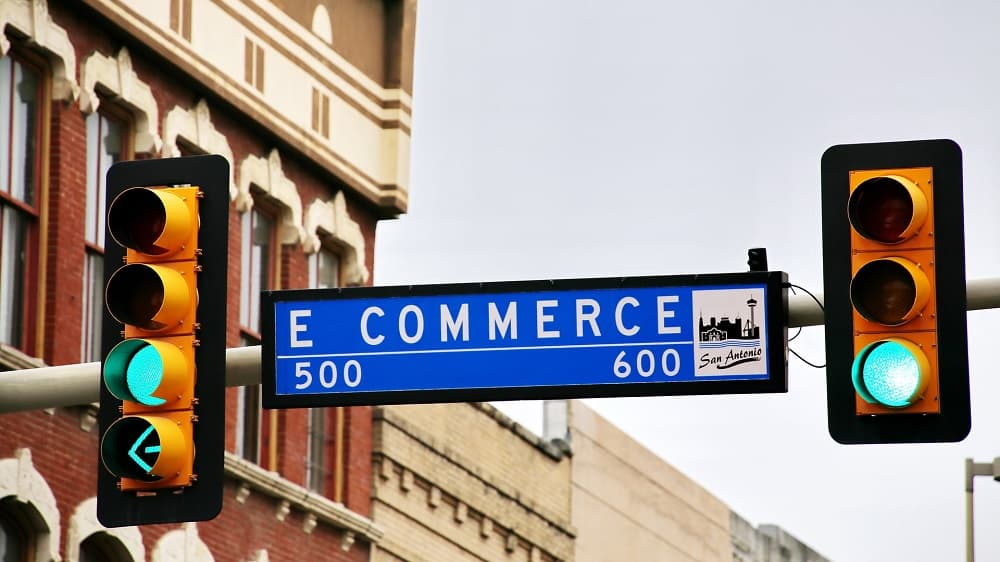It can be challenging for smaller eCommerce stores to find their place on the world stage in today’s modern world. It’s almost impossible to compete with large online stores like Amazon and eBay that have millions of products. The six e-Commerce statistics listed below will assist you in developing a solid plan and growing the success of your online store in 2024 and beyond.
However, these are only statistics, and they can be misleading at times. Keep in mind that what worked in the past does not necessarily work in the future. As a result, we’ll try to decipher what some of these statistics mean for your project and how you can use them as a reference.
Keeping up with the latest eCommerce trends, statistics is important, regardless of your niche. This is a fast-paced industry, particularly in the wake of major global events like the COVID-19 pandemic.
The following data and statistics will tell you what you need to know about emerging trends in global eCommerce, developments in online shopping patterns, e-Commerce ads, and more. Check it out!
Table of Contents
E-commerce Store Visits That Resulted in Conversions
E-commerce stores have a lot of space for growth, with an overall conversion rate of 2.58 percent. This means that you can get ahead of the competition by following a few easy steps. You might, for example, employ a web design company to create a custom web store instead of using a template website like most e-commerce stores.
It’s not easy to transform prospects into customers. The competition will not sit idly by while you take over the market, but statistics like these indicate that the average ecommerce store isn’t exactly a conversion machine.
Offering cheap prices or even excellent goods would no longer suffice. Instead, you can concentrate on delivering a one-of-a-kind shopping experience.
You can use your cookie settings to make the experience easier for returning customers, in addition to creating a great-looking site. You may also use the marketing strategies to reach particular audiences.
Over A Billion People Are Expected to Buy Goods Online
At this time, the world’s population is approaching 8 billion people. This year, more than a quarter of the global population is projected to shop online. That’s a huge pool of possibilities. If you still don’t believe an e-commerce store can be successful, this figure might reassure you.
When it comes to these numbers, there’s not much to interpret. More online retailers are expected to appear as a result of the increasing number of people shopping online, making the market more competitive.
Each year, it will become more difficult to stand out from the crowd, so you’ll need to be innovative when marketing your goods and optimizing your e-commerce company.
You should aim to personalize your marketing strategies, as we described in the previous section. Understand that you can’t sell to everybody, so figure out who your ideal customers are and do whatever you can to appeal to them.
E-commerce’s Share of Total Global Retail Sales Is Expected to Rise In the Future
The forecast that online sales will account for more than a quarter of all retail sales by 2023 is not to be taken lightly. To stay competitive in this industry, you’ll need to maintain and upgrade your online store on a regular basis.
Internet shopping is more popular than ever before, with 14.1 percent of ecommerce sales relative to all retail sales in 2019 and 17.5 percent anticipated in 2023.
E-tailers will have more space to increase their traffic as a result of the wider pool of potential buyers, and there will be more competition when it comes to turning the traffic into conversions. In this war, user experience is likely to play a significant role.
Significant Increase of Active PayPal Accounts
This represents a 23.6 percent increase over the same quarter last year, when there were just 305 million active PayPal users. Despite the fact that PayPal isn’t solely an online retailer, this statistic has significant implications for the e-commerce market’s development.
PayPal users can purchase items online with a few simple clicks rather than entering their credit or debit card information on each website separately. Users are now much more likely to complete their buyer’s journey thanks to the streamlined checkout process.
This does not, however, imply that credit card fees will be phased out anytime soon. In 2017, 42% of online shoppers opted to use their credit cards to make online transactions. Giving consumers a variety of payment options can, in the end, boost the conversion rates.
Smartphones Accounted for Majority of E-commerce Store Visits Worldwide
Mobile e-commerce is becoming more popular. The use of portable devices such as smartphones and tablets to browse the internet has become the norm. However, when it comes to placing online orders, desktops remain the preferred method.
Despite the fact that mobile devices account for 65 percent of retail site visits, only 46% of orders are fulfilled this way. This puts e-commerce store owners in an especially difficult position, as the purchasing process has become more complicated than ever before.
Customers are more likely to switch devices and platforms during a single trip, making it more difficult to predict their purchasing preferences.
Enable users to log in using Google or Facebook to improve the user experience across multiple devices. This allows you to keep any things in their cart even though they move devices in the middle of a transaction.
Non-Stop Working Hours Are the Number One Reason People Shop Online
Customers cite the opportunity to shop online 24 hours a day, seven days a week as a justification for shopping online rather than in a physical store. It’s simple: since the internet is always accessible, customers can buy goods whenever they want.
For the most part, this makes shopping more convenient than ever before. Despite the fact that your e-commerce store is still open, your customer service team needs a break. Outsourcing the customer service department to a different time zone, at least during out-of-office hours, is one way to get around this issue.
You can also prominently display your website’s opening and closing hours, indicating when visitors can expect an answer to their question.
Conclusion
If you own or intend to open an online shop, you certainly want to stay ahead of the curve and understand what customers want. The more consumer dynamics you understand, the more you’ll be able to represent your customers and market your goods.
You need to know your audience’s preferences and what they look for in an online store to get into their heads. Most significantly, you must be able to change your ecommerce website in order to meet and surpass those standards.
The six ecommerce statistics discussed in this post should help you gain a deeper understanding of today’s online shoppers and their preferences. We’ve also included an interpretation of each statistic along with our takeaway, in the hopes of assisting you in designing successful marketing campaigns and strategies.








